
A month ago, I reported on impending, slow-burn-end of the photo world.
No one made a sound.
A week later, I tweeted that I reported on the death of the photo word, and no one had made a sound.
The tweet got a small response.
Andrew Molitor wrote a response-blog-post, and an artist named Landry Major challenged my assertion, saying the fine art photo world was thriving, but admitted she had not read my article.
All in all, not a lot of ruffled feathers for such a grand pronouncement.
Secretly, I think a lot of people have been harboring these thoughts.
I traveled to four photo festivals this year, in San Francisco, San Diego, Chicago and New Orleans, and my observations finally came into focus in the weeks before PhotoNOLA.
So I spoke to some friends and colleagues, in person, or on the phone, to gauge their reaction.
Everyone agreed.
Let’s unpack the details.
(Trust me, this is VERY difficult to write.)
I went to Review Santa Fe in 2009 and 2010, as a photographer.
It made my career.
The first year, I took notes on the 99 other photographers, because I was so “Johnny Tryhard,” and therefore I remember the group well.
Some talented, emerging and mid-career artists, editorial photographers, and photojournalists were all together, and many have gone on to massive careers.
LaToya Ruby Frazier was there, (just like the rest of us,) and has since received a MacArthur Genius Grant!
Some other folks who went on to have success in various parts of the industry, (just off the top of my head): Susan Burnstine, Jesse Burke, Susan Worsham, Ben Lowy, Emily Shur, Matt Eich, Jeff Hutchens, Kurt Tong, Ferit Kuyas, Brian Buckley and Mark Menjivar.
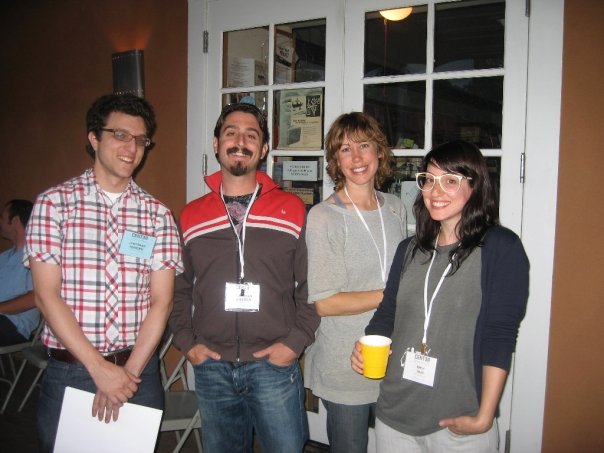
Nearly everyone there was a trained, working artist, photojournalist, professor, editorial photographer, or perhaps a commercial photographer.
Easily, 90% or more were working pros.
There certainly might have been a few hobbyists, or lightly-trained, career-change photographers, but none that I recall.
That was 13.5 years ago.
I’ve since attended 30+ festivals, both as a photographer and as a reviewer.
The proof is in the pudding, as I’ve written scores of articles about these portfolio reviews over the years, all published here on APE.
Of all the festivals I attended, only the New York Times review was free, so it was the most diverse and international. By far! But it was also super-difficult to get accepted, so it’s not a viable option for most people.
Every other festival was run by non-profit, artist-founded, artist-run organizations. (Sorry, I did go to one by the Art Academy of SF, and they’re a for-profit school.)
In Houston, San Diego, San Francisco, LA, Santa Fe, New Orleans, Chicago, Denver, and Portland, the trend was so slow that I never noticed it.

Mea Culpa.
I missed the story of the slow disappearance of the professionals, replaced by hobbyists.
But in 2022, Post-Pandemic, it was impossible not to see the pattern.
This year, the vast majority of photographers I saw at the portfolio review table were coming from retirement, as a long-time hobby, or rekindling the passion after many years, hoping to change careers.
I’ve previously written that I had such a hard time remembering work from the PhotoAlliance review, I only featured two artists.
You still meet a few full-time professional artists, or busy freelance journalists, and their work is normally better, so it stands out quickly. There are plenty of professional educators still on the scene, as professors are under pressure to exhibit and publish, for tenure.
The educators also have stable jobs, and some schools provide professional development funds, so stipends are available for the professors.
And their work also tends to be of a MUCH higher caliber.
Post-pandemic, though, the majority were coming to the festivals now, (which are expensive, in a world with inflation, and concentrated resources,) ready to get in on the action, without realizing how little action was left.
One post-retirement-artist even told me they were ready to level up to a solo show now, because they had done the group-show thing, so now it was time.
(Like ticking boxes off a list.)
And I am not being ageist here.
Please allow me explain further.
The shift was gradual, but when I attended the festivals as an artist, (in 2009, 2010, 2012 and 2016,) I always made more money than I spent.
Eventually.
The marketing budget worked, because whether I sold prints to collectors out of the box, on the spot, sometime later on, or ended up with shows that sold work, it always panned out.
There was a professional artist/journalist class, of trained experts who’d gone to school, and put in decades of time.
There were also enough opportunities and resources to support those artists, journalists, and editorial photographers.
Now, (as I’ve previously written,) the gallery/newspaper/magazine/ad buy infrastructure is a fraction of what it was, chopped year by year, so of course the opportunities will have lessened commensurately.
Simultaneously, over those 13.5 years, the products of the photo world, glossy art on pretty white walls, or sleek photos on the home pages of the NYT or the Washington Post, were very visible markers of success.
And making pictures is fun!
So of course, with the photo world incessantly promoting itself, and photography getting ever easier from better digital cameras and phones, it makes sense people who put their passion aside, due to life obligations, would want to come join the party.
Who wouldn’t?
And year by year, I treated each person at the review table the same, and tried to honor and help motivate folks who were new to giving their heart to their art.
No matter the age.
Many of my consulting clients have come from this cohort, and I’ve busted my butt, and had a great creative relationship, with each of them.
But now the portfolio review community is made up primarily of people who have financial means, and many are willing to pay $35,000-$50,000 to publish a photo book, OUT OF POCKET, because it’s a marker of status and success.
(Also, because it’s a tremendous feeling of accomplishment.)
As I wrote a month ago, photography is now everyone’s passion.
It’s a visual language that belongs to THE WORLD.
Nothing has been so democratized; not even music.
A medium once dependent on cryptic chemicals, and tricky, expensive, mechanical cameras, is now fully point-and-shoot brilliant.
From Leica monochromes to great iPhones, it’s not hard to make a “professional” looking photo.
So we can cheer that our love now belongs to everyone, and we can also mourn that so many professionals have left the field.
To be clear, I’m not saying festivals don’t belong anymore.
But at PhotoNOLA two weeks ago, of the 9 official reviews I did, only two photographers seemed to be full-time professionals: both educators there to promote their personal work.
2 out of 9.
So I asked my colleagues, and they agreed:
Perhaps the model needs to be tweaked a bit, to accommodate the new reality?
As I said, the NYT runs free reviews, because they can.
But Filter Photo, in Chicago, has active relationships with local art schools, so you can always count on 5 or 6 students coming to the review table. The schools buy reviews in blocks, (or perhaps trade for sponsorships,) so the up-and-coming, committed students attend for free.
(That’s also a great way to keep it diverse, but I’ve only seen it done at Filter.)
I believe it’s important to note the demographic shift, and ask if perhaps there are other ways we as a global photo community can support regular, working-stiff artists, teachers, and freelance journalists?
We need to make sure there is still a photo world for the next generation to enter.
Maybe festivals can increase their emphasis on low-cost education and exhibitions, and make the high-cost portfolio review elements a smaller part of the overall financial reality?
Or perhaps some of the non-profits can start adding more and more next-generation artists to their boards and advisory committees?
Because I hung out with a handful of 20-somethings this year, in San Diego, Chicago and New Orleans, and I can legitimately vouch for Gen Z.

They are coming to save the world, with their empathy, multi-talents, and their Internet-charged brains.
I’m here for it.
But outside of the handful of students at Filter, none of the younger generation I met were at the festivals to be reviewed, as “paying customers.”
We can welcome later-in-life artists, and career-change photographers, and support their exciting, creative journeys.
And I have.
But given what I saw on the road in 2022, if they’re now the majority of the festival community, (and the ones primarily paying-to-play,) I believe it needs to be acknowledged.
Saying “Beetlejuice” three times can be scary.
But I said it.
So let’s move on.
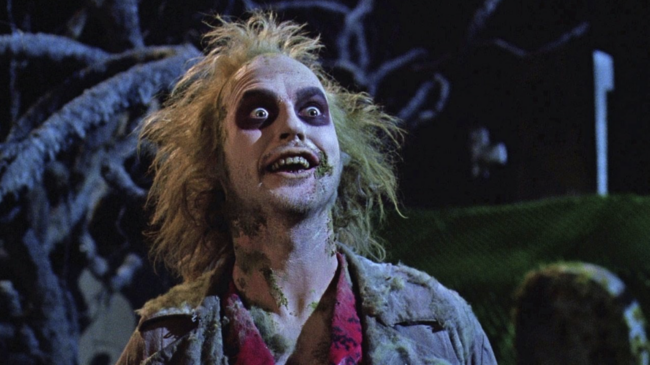
I’m in an awkward position, as I’ve already told you I quit, but Rob’s allowing me to wrap up the column here in an elegant way.
I’ve got to share the best work I saw at Filter, and PhotoNOLA, so that’s two more articles.
And I’m sitting on a sizable submission-book-stack.
At first, I thought I’d try to cram 20 mini-reviews into two articles.
Little pods of information.
But that doesn’t feel right.
It wouldn’t allow me to honor the photographers who trusted me with their books. (Their artistic babies.)
No.
So I’m announcing today that I’ll start a personal blog, in the next two months, so I can properly review every book that was sent my way.
It’s only fair, and after all, I love to write.
I promise to provide full details before I wrap up here, (and on social media,) and I’ll do a quick book review today, too, as a show of good faith.
Because I’d like to state one thing very clearly: I love the global photography community, and it’s been an honor to have such a visible platform here for so long.
If just a few of you come over and read the book reviews, (or whatever else I write about,) that’s cool with me.
I guess it will be my hobby from now on, since I’ll be doing it for free.
For myself. As art.
Even though there are only 3 columns left here, (after today,) I always keep it real.
I went to the book stack, and looked for the oldest submission.
Of course it’s perfect for today, because that’s how the column-magic has always worked, over the years.
“American Protest: Photographs 2020-2021,” by Mel D. Cole, was published by Damiani, and arrived in Nov of 2021.
January 6th, which is featured in the book, was still fresh, and these days, we wonder if the endgame is coming?
But man, does this book pack a punch.
The intros tell us that Mel D. Cole is, and has always been an independent journalist, and the end notes say that funding was provided by the Black Photographers’ Fund. (Which he created.)
Damiani is an expensive publisher, so clearly a lot of people came together to enable this creative vision.
It’s pretty much the best case scenario for how the photo world can support working pros. (As I wrote above.)
But it’s also a great example of how I’ve tried to promote diversity of culture, vision and perspective here, over nearly 13 years.
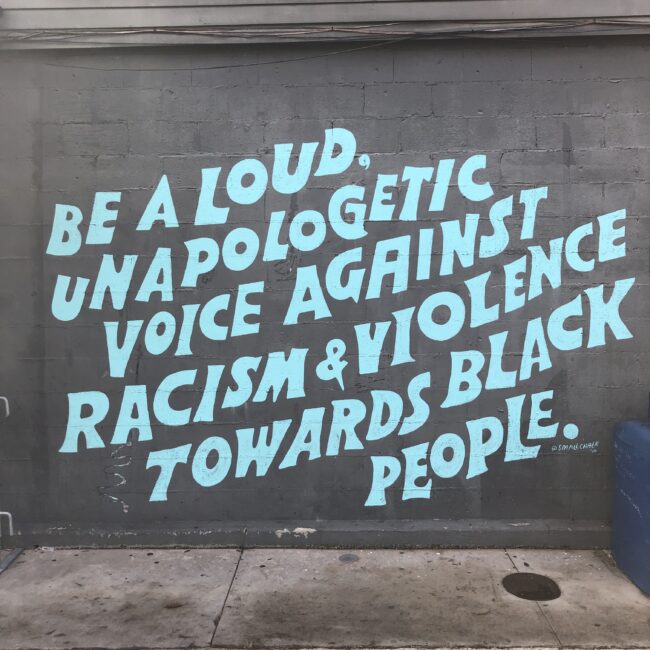
This book is clearly the product of the combination of talent, grit, bravery, timing, community support, and the brilliance of the photographic medium.
History was preserved.
Art was made.
Perspective was offered.
It’s badass!
I saw no designer credits, so I’m assuming Mel D. Cole did it himself, and it grabs you from the first second.
Black men in handcuffs, but rendered in such a way that you think… Shackles… Slavery.
(The reference is not to be missed.)
That the book ends with raised firsts and Black Lives Matter signs held high, tells you what you need to know about call backs, structure, and progression.
The pictures are amazing, and speak for themselves.
Period.
But just as I found myself about to skip ahead, (because there are a lot of pictures, and the structure was getting repetitive,) BAM!!!
He drops a color photo on us, the first, of a blood-stained Philly cop in his bright blue uniform.
Shocking!
Seriously, it jolted me back into the present moment.
And that use of occasional color popped up again, a few times, always to smart effect.
This is just a terrific book.
Top class.
The critic in me will point out that I don’t love the font choice in the intro text, (including one by Jamie Lee Curtis,) and I particularly dug the honest, casual, loving, thank you page.
Today’s book is a great example of why I’d like to see the global photography community organize a bit, to make sure the life-long art voices, those countless creators who committed to the path, and continue to stick it out…
We need to maintain a system that supports these photographers.
Otherwise, what are we doing?
To purchase “American Protest: Photographs 2020-2021” click here
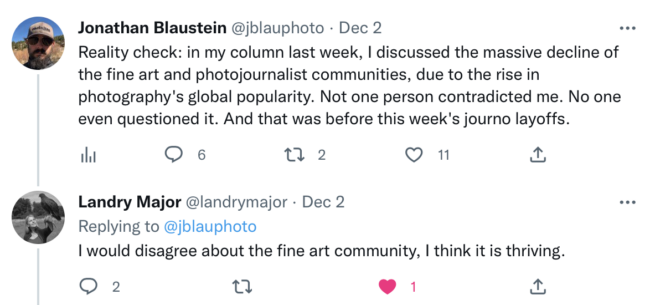
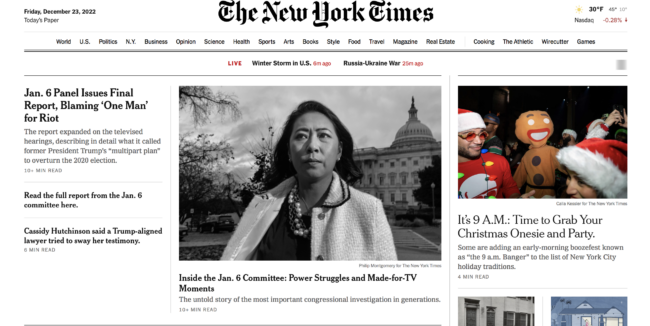
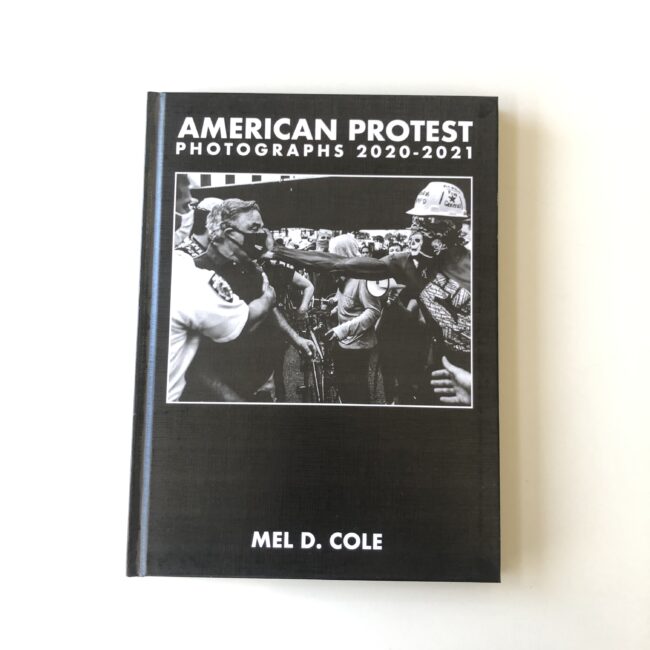
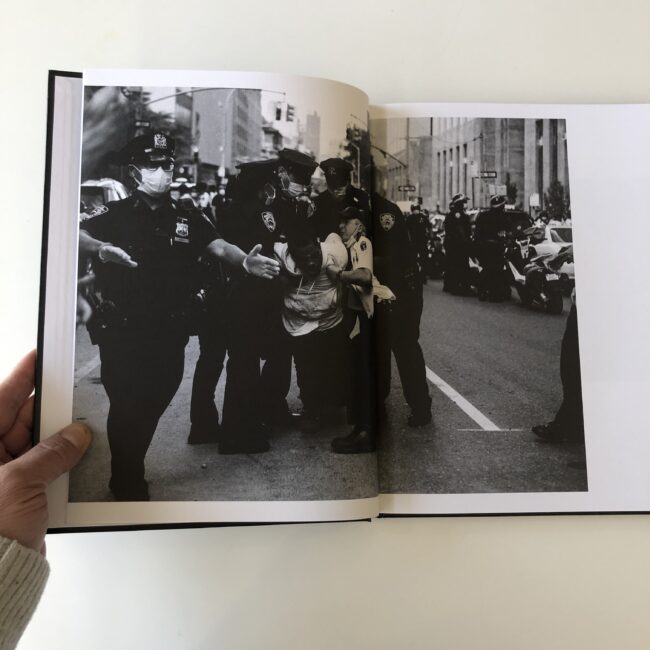
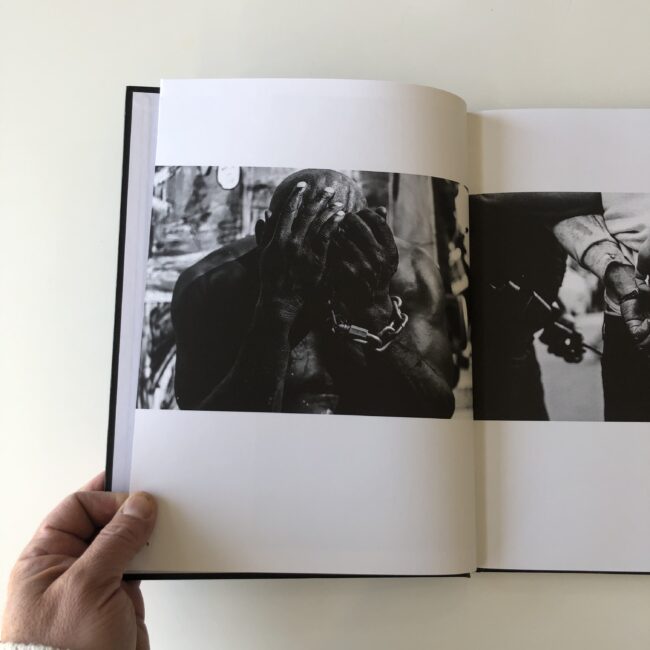
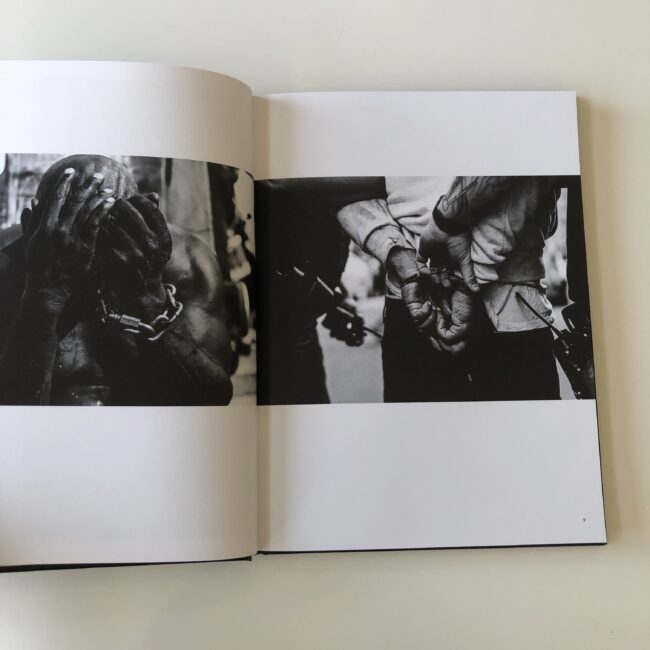
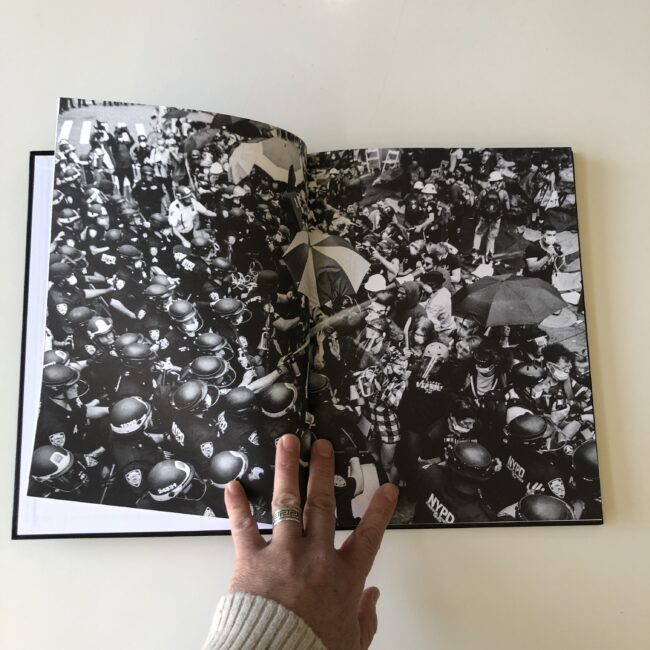


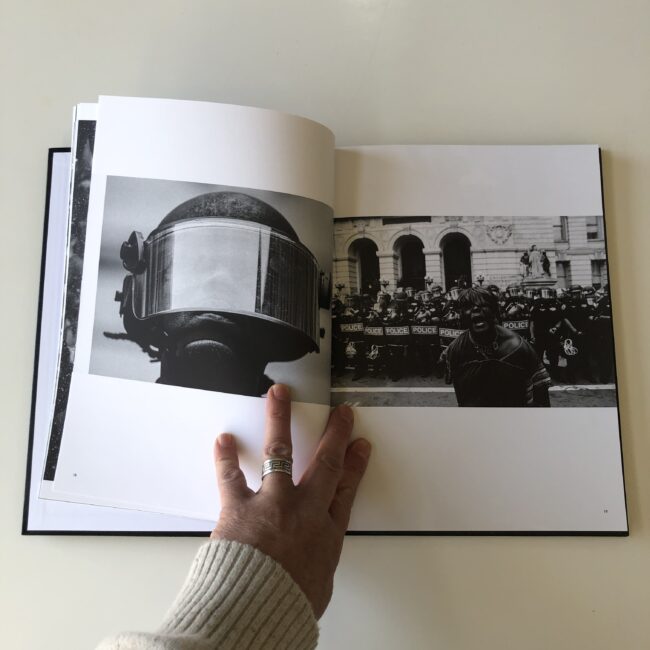

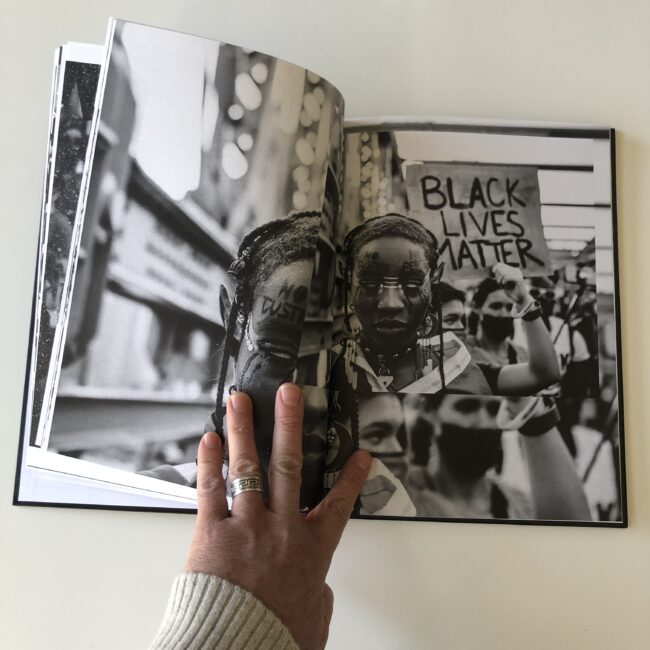
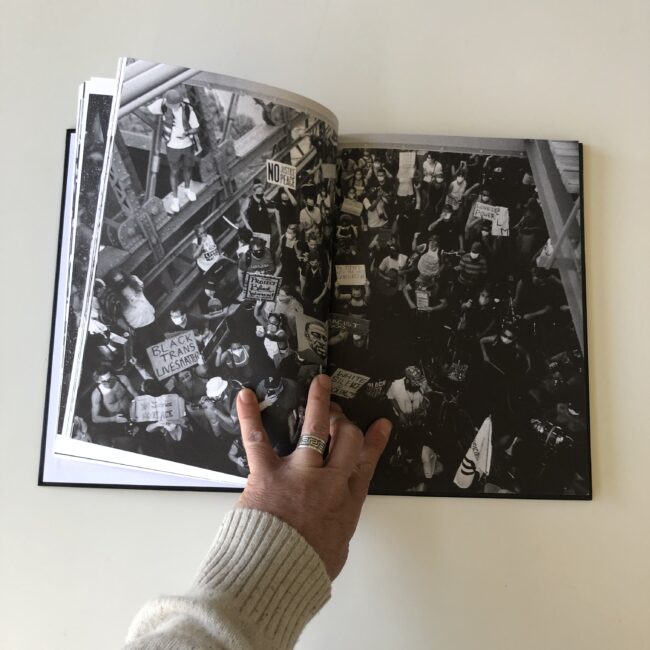
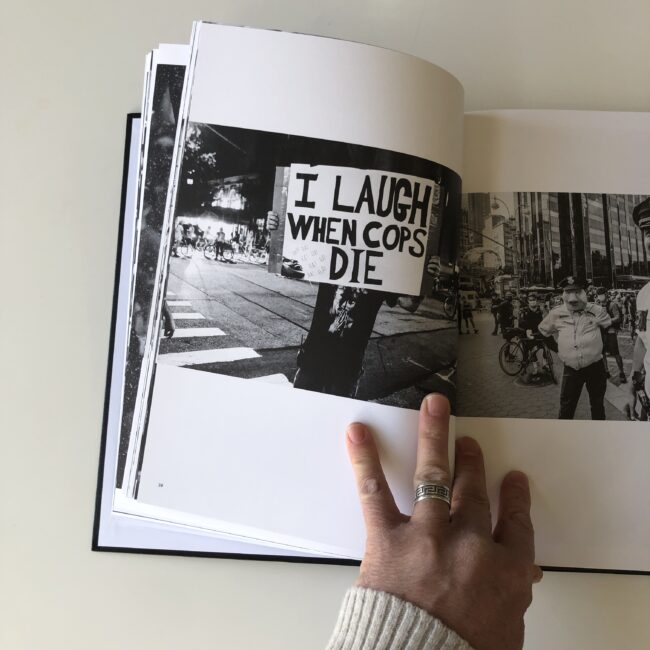

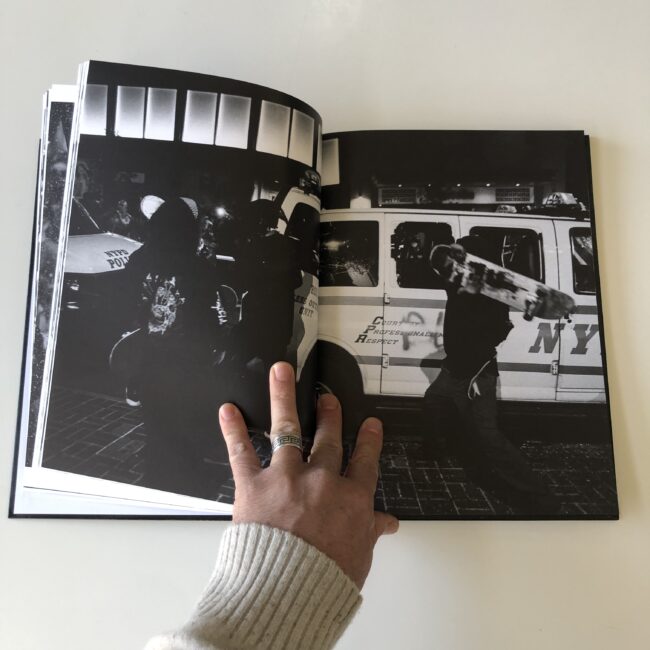
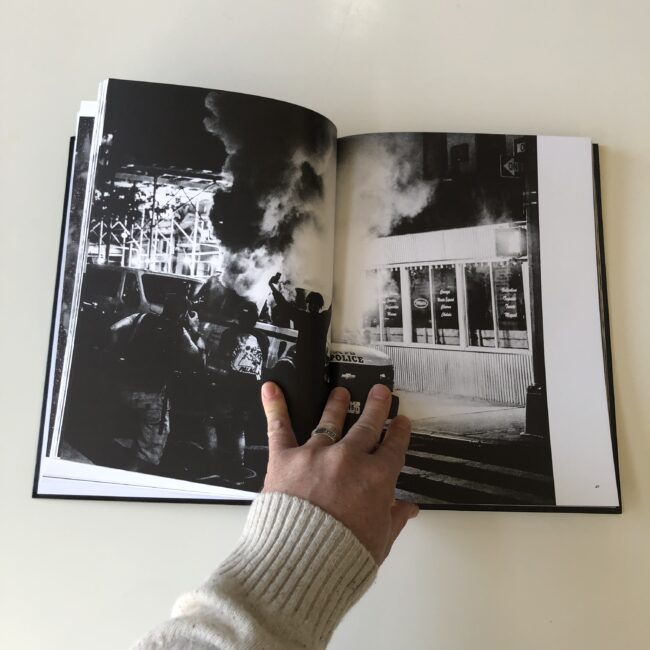
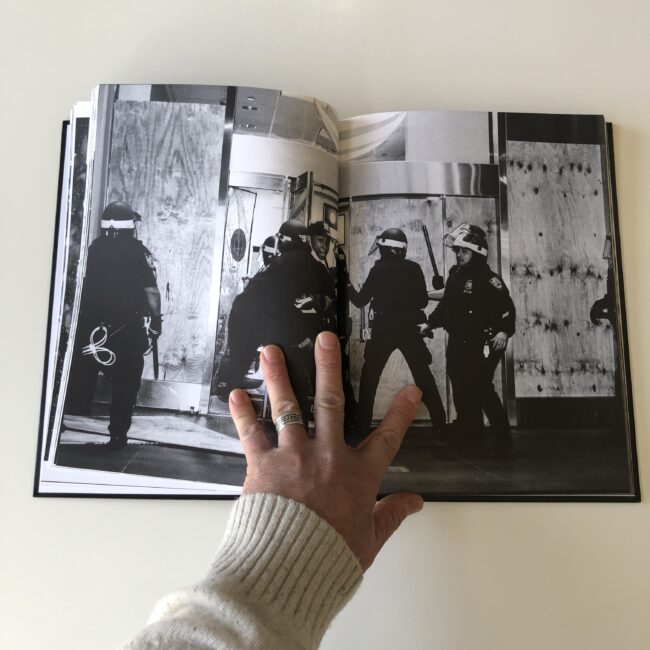
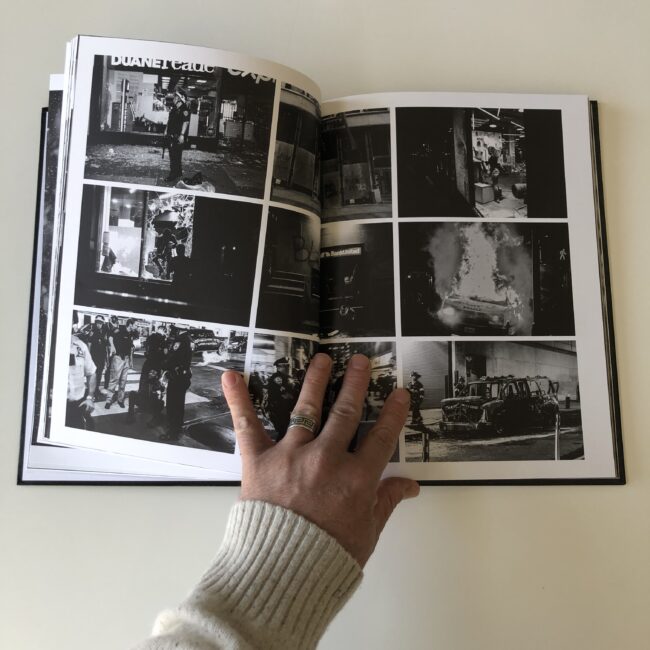
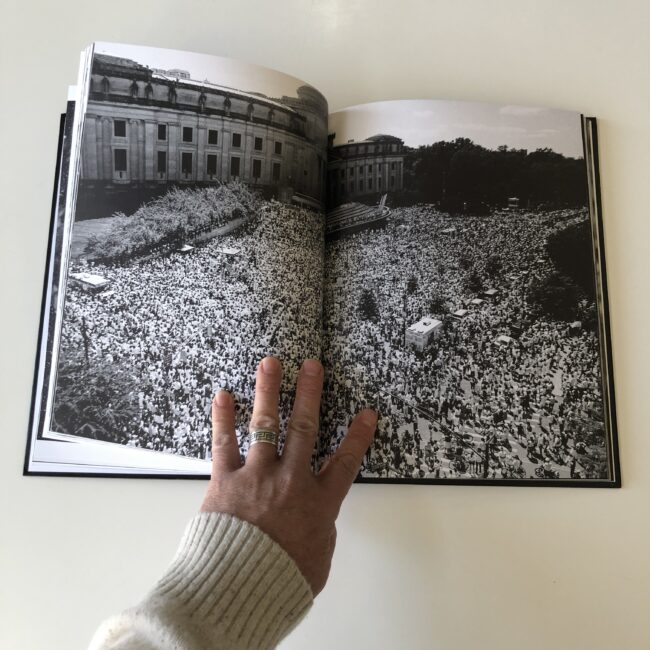
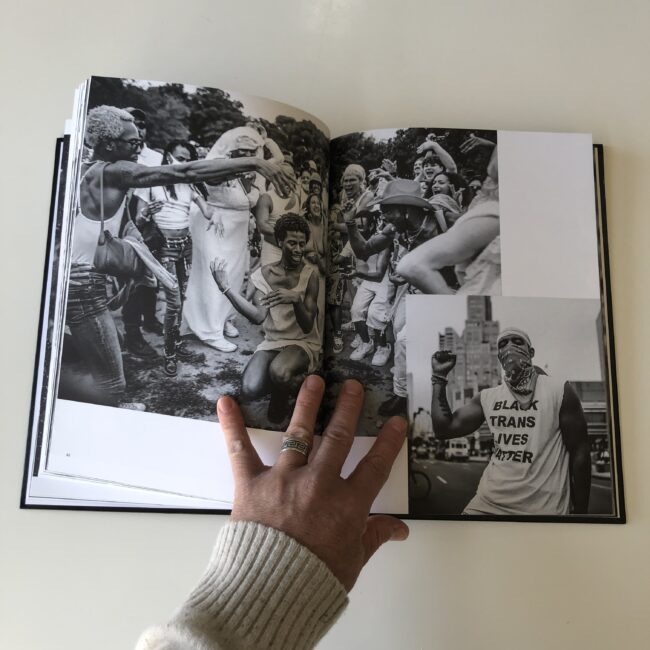
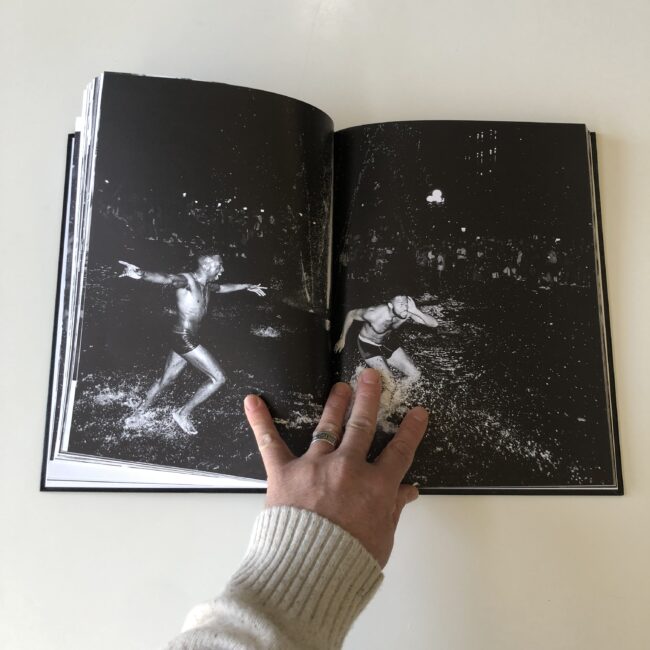

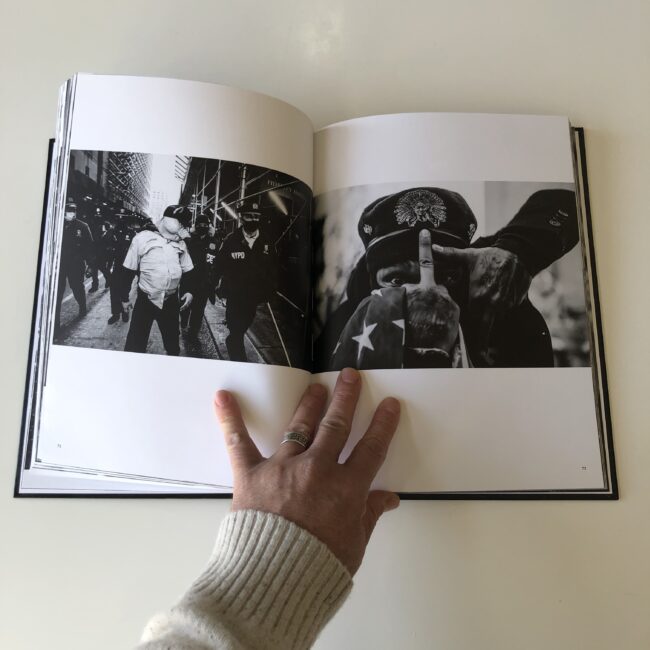
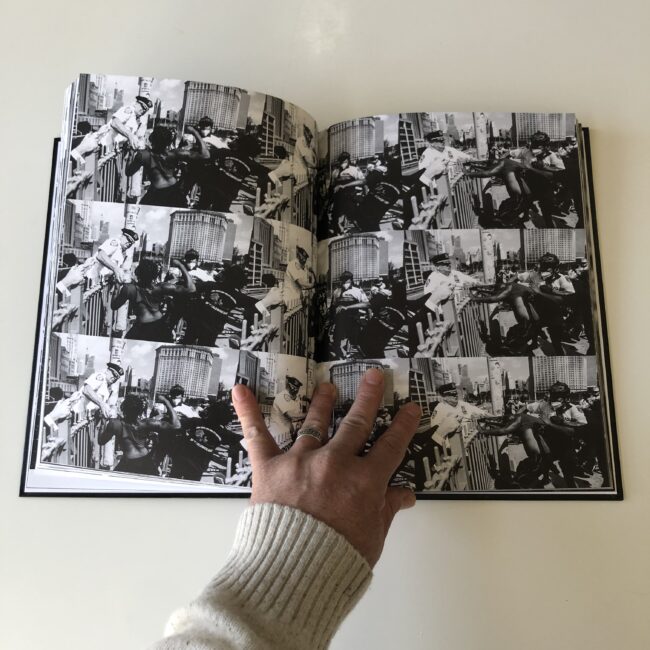
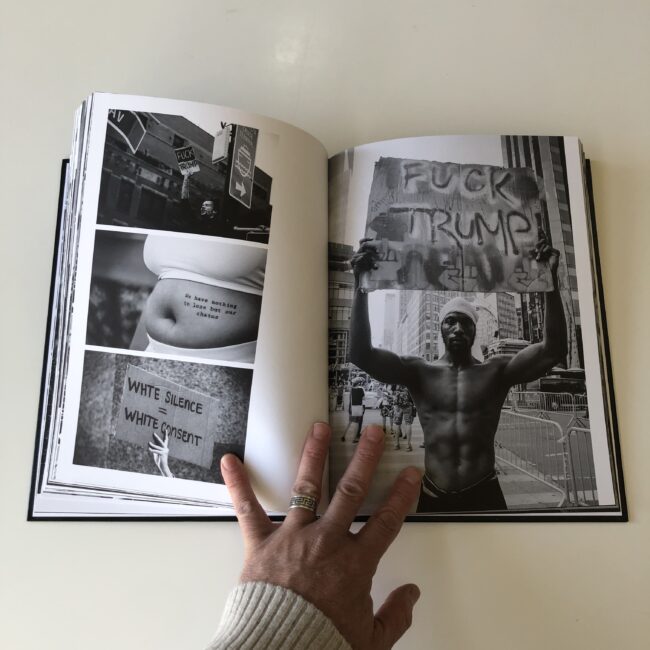
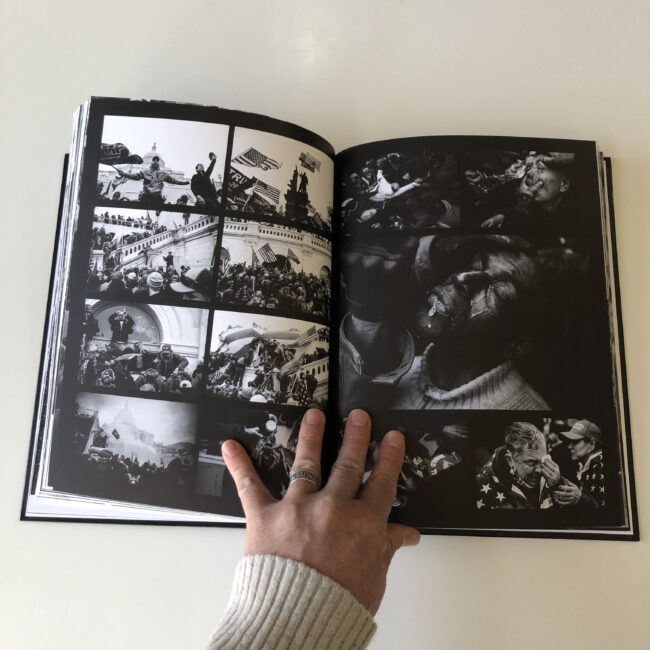
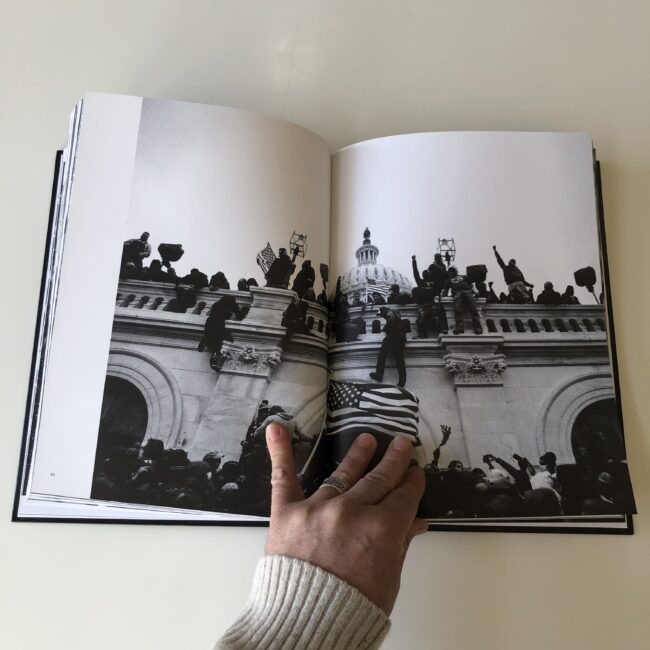
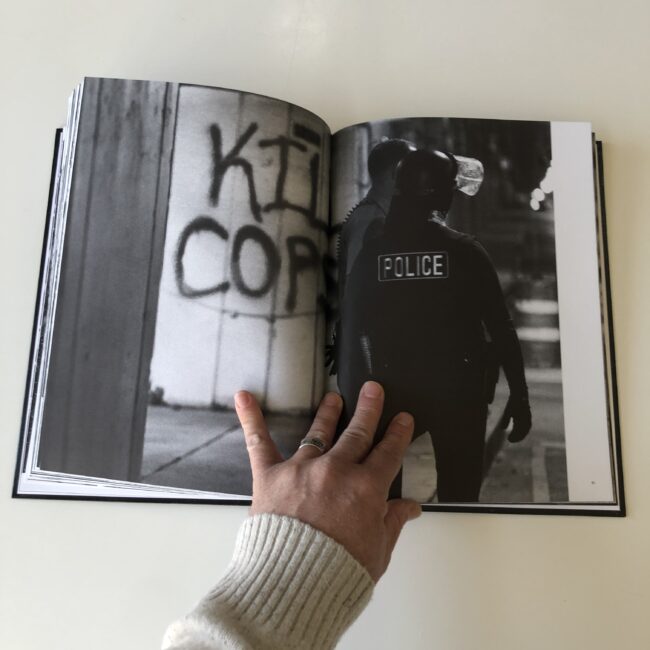

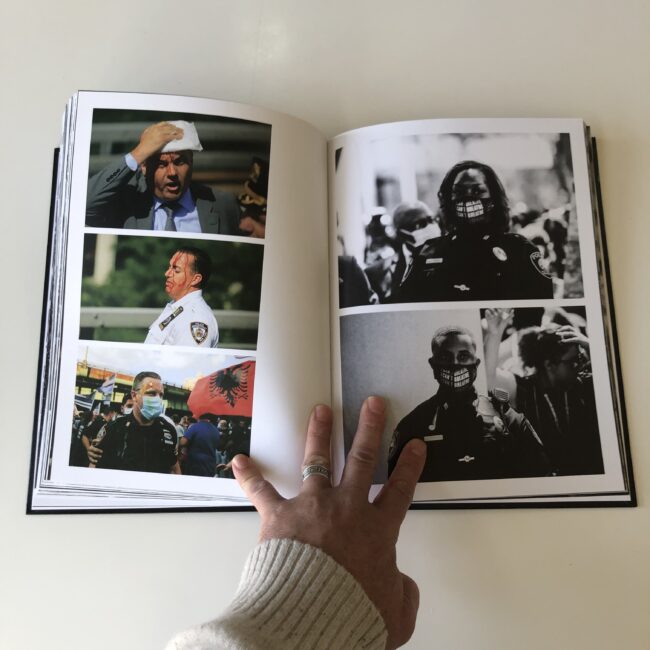
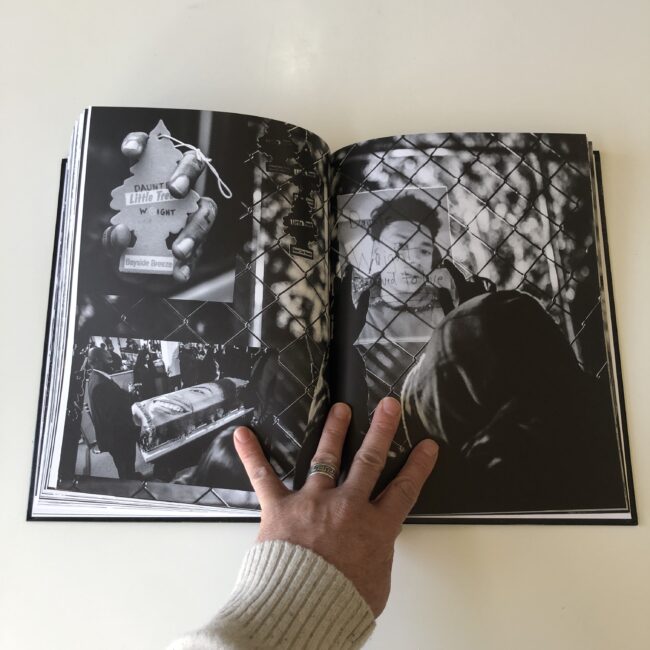
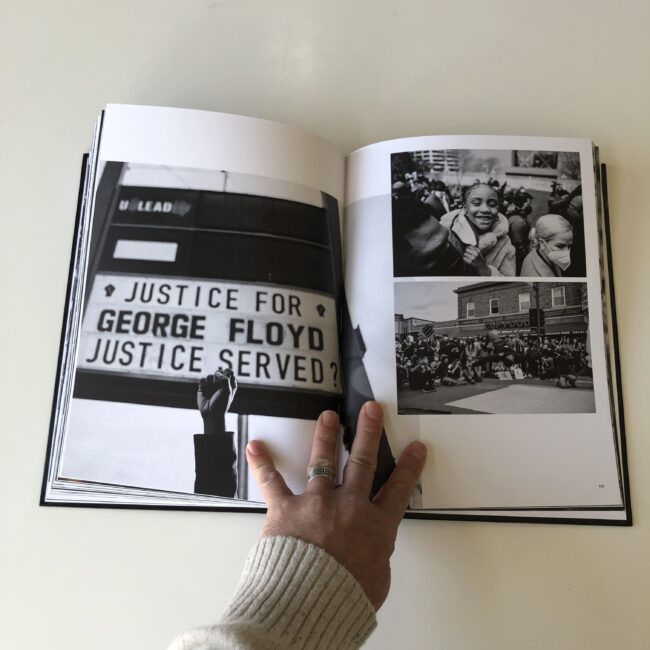
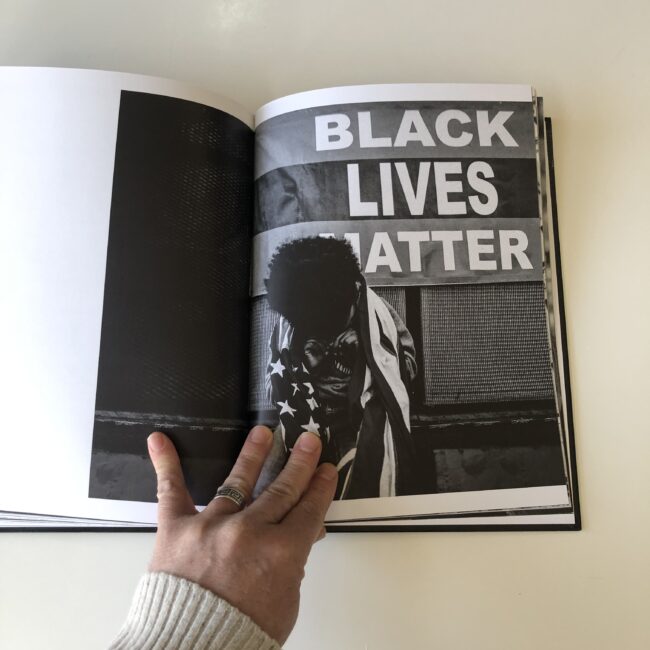
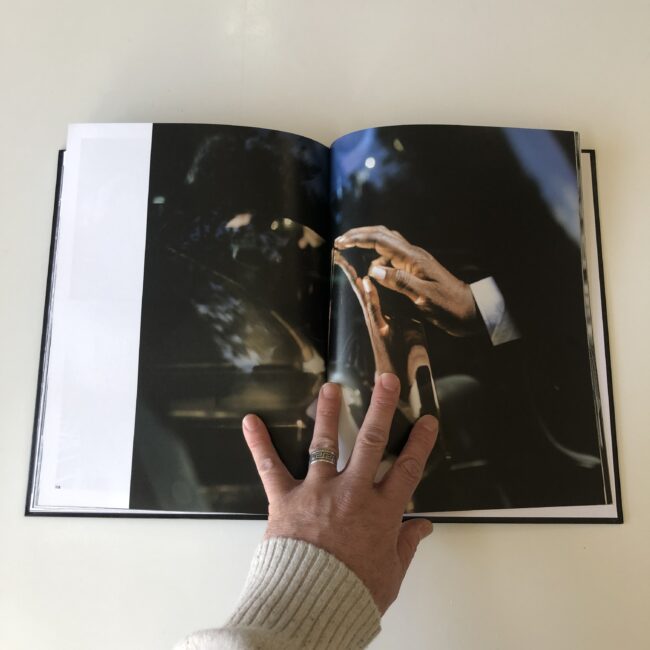
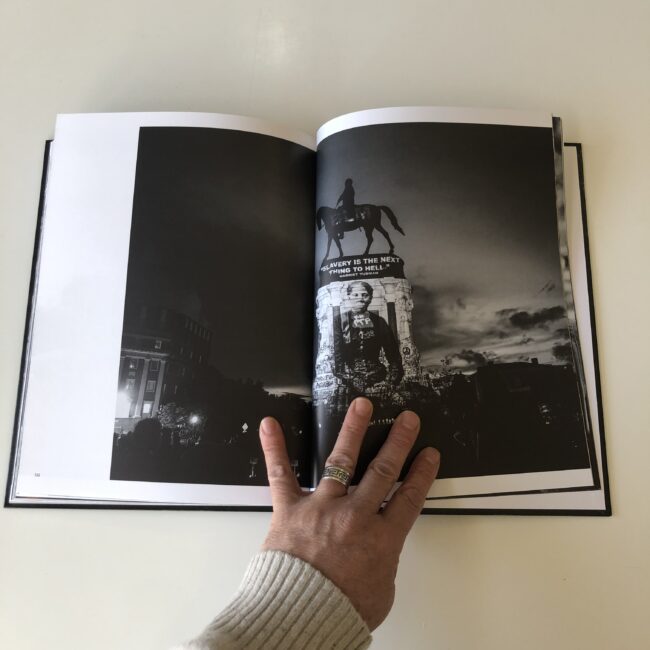
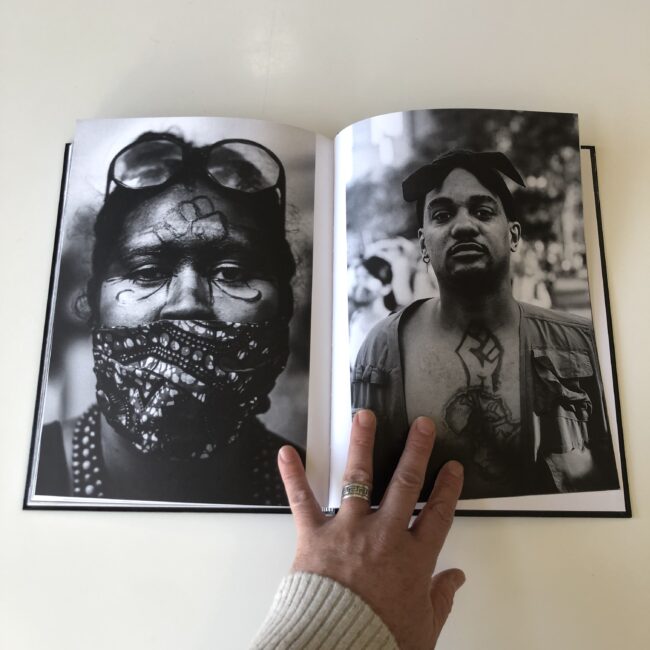
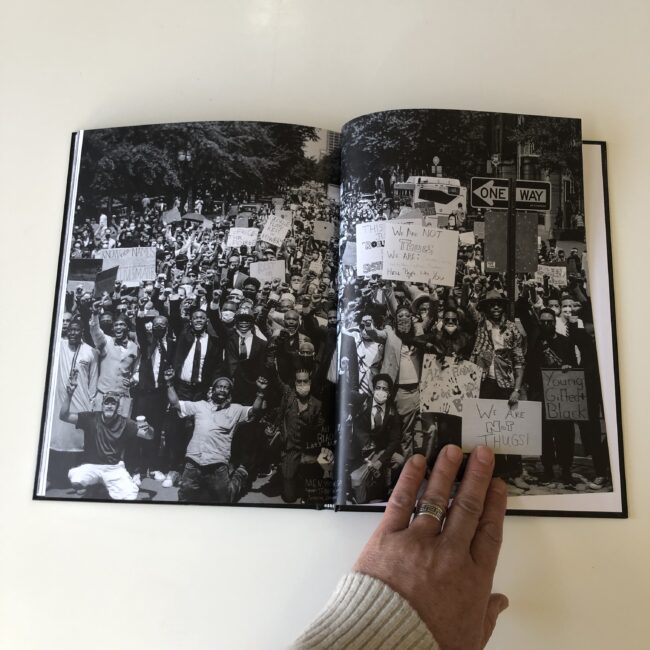
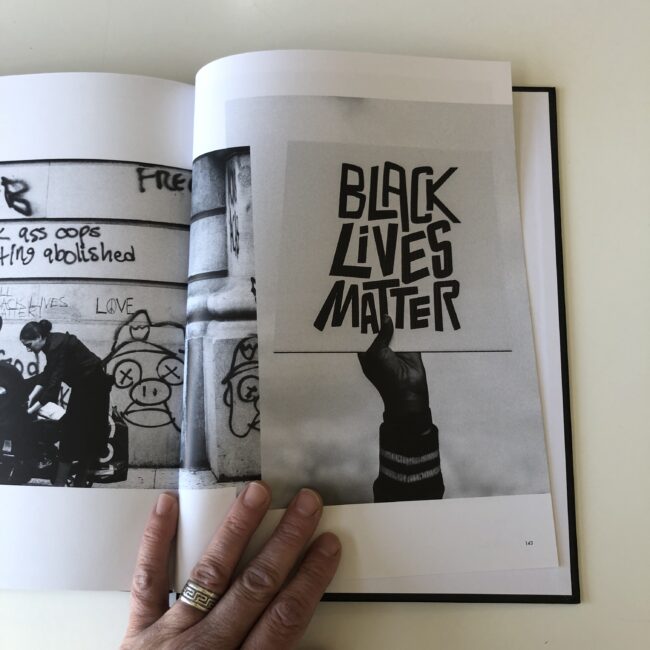
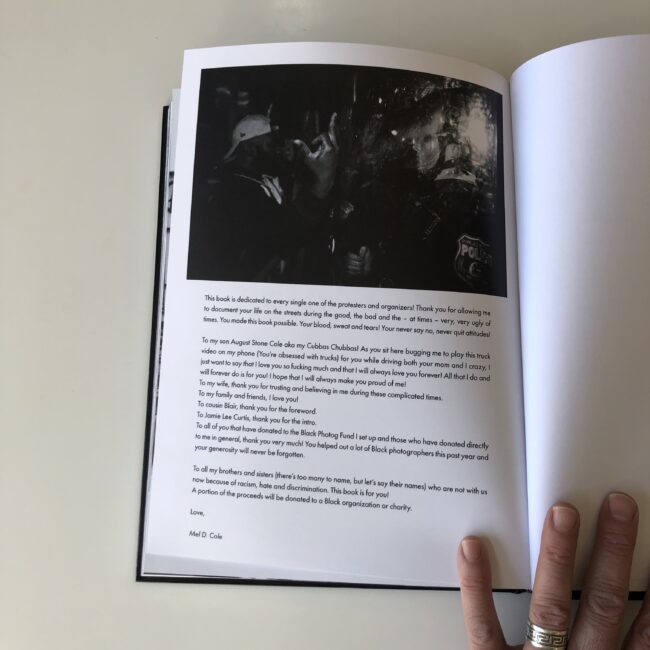
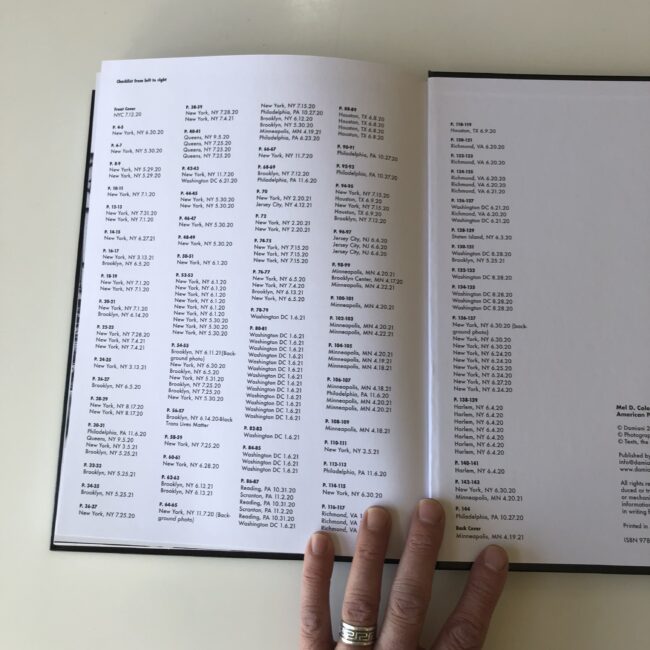

5 Comments
As someone who was educated in photography during the time of film, and who later shot all my commercial work in film, and later worked professionally in color science and film I also find that the ways we approach image-making has evolved faster than our ability to comprehend what all these digital devices offer us. Using Photoshop since version 1 I remember the shift in thinking it took to fully comprehend the tool (most of us were still shooting film at the time.
So I set aside my careers in photography, science and the academic universe to walk across the US, through Europe and the Middle East on a traditional pilgrimage to sort things out…..
What I learned over my travels is that most of us has forgotten how to walk in our digitized world….
Today in pouring through the thousand of film photos I shot during that journey and using the latest versions of Lightroom and Photoshop I am struck with old vs. new imaging technologies – Film still has a much wider gamut – while digital looks best when viewed on a monitor only. I realize that our widest audiences view our work digitally and seem to have shorter attention spans and this also affects how we approach image-making.
Most of my favorite photographers were from the 1950’s as they had more of a sense of both the artistic and mechanical side of the photographic process – I also understand that as much as I grew to learn throughout my professional career makes me a dinosaur
I still believe we all need to learn how to walk again.
you can see some of my photographs of my long walk at https://onpilgrimage.net/photogallery/
Eggleston is said to have “democratized” the art of picture taking, the internet has pretty much democratized everything else concerning photodom. And still, there is a hierarchy of those who’ve made it, and those who continue to photograph in the margins strictly for the love of it- no matter our respective age.
The art and future of photography is in your hands- and those of even younger generations, same as it ever was.
Intense dynamo of a book!
And look forward to the new blog…
Thanks, Stan. I can only hope you’ll come over, read, and participate. Sending good vibes your way!
In trying to come up with a short response to well thought out post, I landed on the analogy of traffic.
Have you ever been driving on a highway when you suddenly hit some backed up traffic? You assume it’s a wreck or stalled vehicle as you slog through the slow procession. A few miles go by and the congestion eases up and traffic starts to flow at speed limit again. There was no wreck, there was no stalled vehicle. (To continue this analogy, let’s say that this is a major interstate and those individuals with trust funds or who have the financial means to make and exhibit work are in the paid toll lanes that are moving at speed limit even while the main road remains jammed)
I think this is what has happened over the past 15 or so years that you are writing about. There wasn’t some disaster or major shakeup in photography, just the accumulation of small issues that cause the whole process to stall.
There is more photography than ever and less places for the work to be seen. Less galleries, less publications (online and print), less blogs, and algorithms that seem dead set on only showing celebrity and influencer images and which now have made the shift to video.
The majority of schools and universities have continued the model of teaching the exhibition ladder:
Small Local Group Shows <Small National Group Shows < Curated Local Group Shows < Small Gallery Solo Show < Large Museum Curated Group Show < Large Museum Solo Show
As opportunities become scarce, the graduate students and faculty are now competing for these smaller shows and a smaller number of artists will "make it" through to the national shows.
Major museums need to make money and continue to show artists that they know will bring in visitors. Book publishers need to make money and continue to publish books they know will sell.
There's no one move that can get the traffic going again and I'm not saying I have the answer, but as with all problems, acknowledgement is the first step.
Thank you! Great analysis!
Comments are closed for this article!